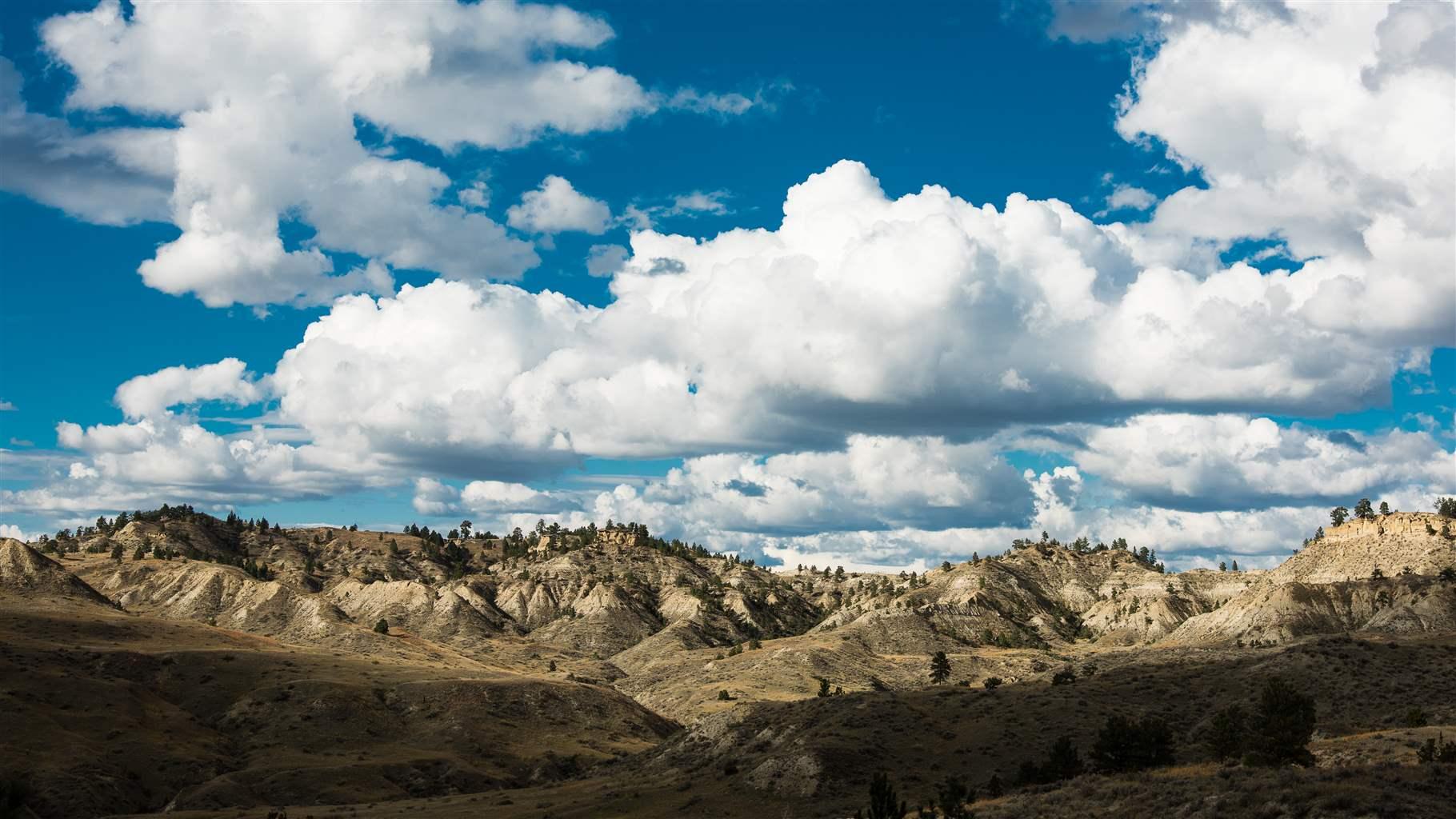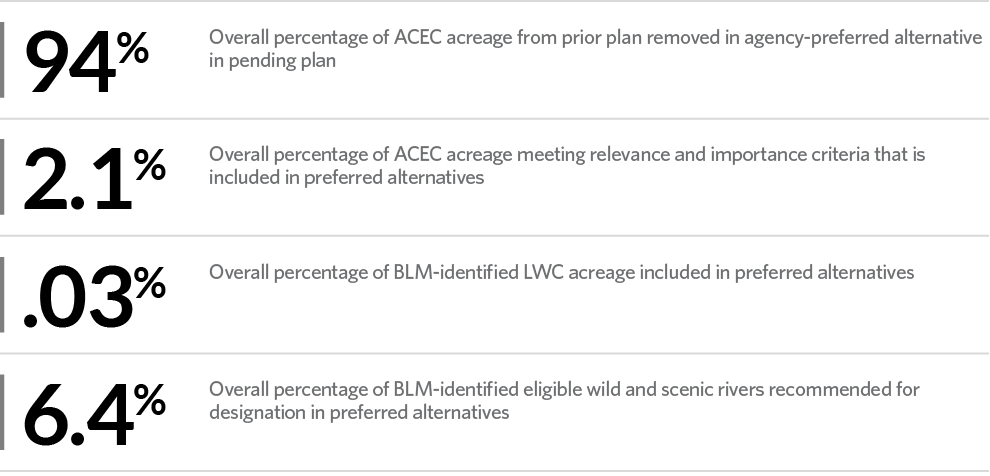BLM Ignores Own Findings in Proposed Management Plans
Millions of acres of Western public lands could lose protections

Overview
The Bureau of Land Management (BLM) oversees a quarter-billion acres of public lands across the nation. Every two decades, the agency revises its management plans for each of the more than 100 planning areas—designated regions that it oversees. In mid-2019, BLM released six draft plans that will guide management of more than 20 million acres for the next 20 to 30 years. The Pew Charitable Trusts reviewed the plans and found troubling trends within agency-preferred alternatives—the course BLM says it is most likely to take— that could result in the loss of protection for millions of acres of public land: The proposals would fail to conserve lands that the agency’s own research has deemed worthy of protection,1 cut decades-old safeguards, minimally protect a fraction of 1 percent of the areas found to contain wilderness characteristics, and open vast swaths of public lands to energy and mineral development.
Federal law requires BLM to consider special management, including prioritizing the designation and protection of areas of critical environmental concern (ACECs), for lands that have special fish and wildlife, archaeological, and unique values. However, the 2019 drafts feature far fewer ACECs designations than the agency’s findings of lands that meet the criteria warrant and propose to eliminate ACECs that have been in place for decades.2 (See Table 1.)
As with ACECs, a large gap exists between BLM’s findings for lands with wilderness characteristics (LWCs)—natural places that provide excellent opportunities for solitude or primitive, unconfined recreation—and how many of these lands are included for adequate management in the draft plans: Less than 1 percent of agency-identified LWCs would be managed to protect these values under the BLM drafts.
Endnotes
- Bureau of Land Management, “Bering Sea-Western Interior Resource Management Plan Areas of Critical Environmental Concern Report on the Application of the Relevance and Importance Criteria and Special Management” (2018), https://eplanning.blm.gov/epl-front-office/eplanning/planAndProjectSite.do?methodName=dispatchToPatternPage¤tPageId=48431; Bureau of Land Management, “Lewistown Field Office, Resource Management Plan Revision and Environmental Impact Statement: Areas of Critical Environmental Concern—Report on the Application of the Relevance and Importance Criteria” (2015), https://eplanning.blm.gov/epl-front-office/eplanning/planAndProjectSite.do?methodName=dispatchToPatternPage¤tPageId=50899; Bureau of Land Management, “Preliminary Areas of Critical Environmental Concern Report, Missoula Resource Management Plan” (2018), https://eplanning.blm.gov/epl-front-office/eplanning/planAndProjectSite.do?methodName=dispatchToPatternPage¤tPageId=77158; Bureau of Land Management, “Four Rivers Field Office Areas of Critical Environmental Concern (ACEC) Report,” Appendix U (2019), https://eplanning.blm.gov/epl-front-office/eplanning/planAndProjectSite.do?methodName=dispatchToPatternPage¤tPageId=10301; Bureau of Land Management, “Evaluation of Potential ACECs: Relevance and Importance Criteria: April 2019 Draft, Royal Gorge Field Office” (2019), https://eplanning.blm.gov/epl-front-office/eplanning/planAndProjectSite.do?methodName=dispatchToPatternPage¤tPageId=53991; Bureau of Land Management, “Evaluation of Existing and Proposed Areas of Critical Environmental Concern for the Uncompahgre Planning Area” (2013), https://eplanning.blm.gov/epl-front-office/eplanning/planAndProjectSite.do?methodName=dispatchToPatternPage¤tPageId=86004.
- Ibid.














